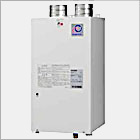Accidents involving ordinary consumers of LP gas trends
After the number of accidents involving ordinary consumers of LP gas in Japan peaked at 793 cases in 1979, the public and private sectors united in endeavors to promote the spread of safety devices such as gas meters with built-in microcomputer chips and the like, and as a result we saw a reduction to something less than one-tenth the number of cases over the ensuing 10 years.
In recent years, the city gas industry and gas appliance manufacturing industry have cooperated in a variety of endeavors to raise the level of safety even further through the proliferation of gas cooking stove with safety devices, promoting the upgrading of gas water heating equipment to models equipped with safety devices (incomplete combustion prevention apparatus), and prevention of accidents involving kitchen appliances for commercial use through the creation of safety manuals and promoting the installation of carbon monoxide alarms and the like.
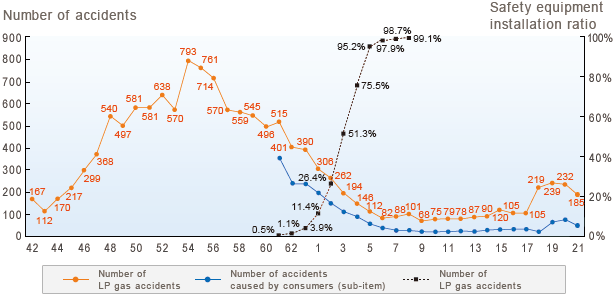
Source: Nuclear and Industrial Safety Agency, Ministry of Economy, Trade and Industry
(NB): LP Gas Safety Equipment Installation Ratio Report completed in 1996.
Gas Cooking Stove with Safety Devices (Si Sensor Konro)
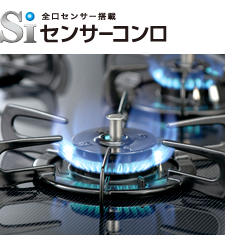
Si Sensor Konro" is a new type of stove incorporating Oil Overheating prevention function on all burners (when deep-frying or when there is an empty pot or pan on the burner or the like and the bottom of the pot becomes abnormally hot, a sensor detects the condition and automatically shuts off the flame), Extinguishing safety device (in case of the flame going out unnoticed due to overspill of liquid boiling in a pot or due to wind or other cause, the absence of heat from the flame is detected and the burner is shut off automatically), Forgotten flame extinguishing function (auto shut off when in continued use for a specified length of time).
The three above-mentioned safety features were legally mandated in October 2009, and as of September 2010, approximately 9 million units have been sold. As the result of these measures, residential fires resulting from cooking stove accidents in the two years since their introduction have been reduced by 17.5%.
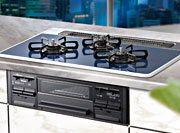 |
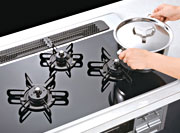 |
 |
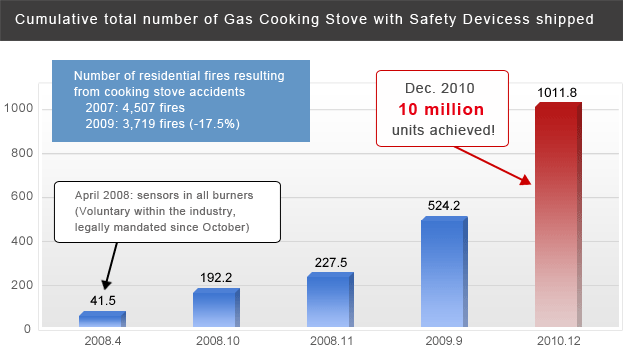
Gas meters
Micro-computer Meter S type
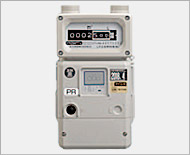
The Microcomputer Meter S type is a type of gas meter incorporating the function of constantly monitoring the conditions of gas usage so that a gas leak or other abnormality will be detected immediately and it will automatically shut off the gas. Nearly all gas meters throughout Japan are of this type.
When the gas is shut off
| • | in case of abnormally long period of time in use |
| • | in case of earthquake registering 5 or above on the Japanese scale |
| • | in case of excessive flow volume indicating abnormal gas consumption |
| • | in case of the alarm being set off |
| • | in case of cracks in rubber hoses or pipes |
| • | in case the gas pressure within the pipe drops |
Ultrasonic gas meter
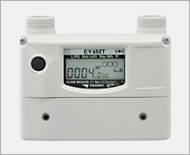
The Ultrasonic gas meter is a next generation gas meter that measures the flow quantity of gas by means of ultrasonic waves. The special characteristics of this meter are the absence of moving parts (totally computerized), advanced communication functionality and various monitoring and shut-off functions can be incorporated, improved measuring precision, miniaturization, and reduction of time required for safety confirmation upon recovery.
LP gas meter centralized monitoring system
The LP gas meter centralized monitoring system is a system which rationalizes inspection, delivery and safety operations by linking the microcomputer meter to the "Centralized Monitoring Center" by means of communication lines, and at the present time there are approximately 6 million units (about 25% of LP gas consuming households) installed throughout the country.
In the future, expansion of the use of wireless terminals together with the centralized monitoring system will be promoted, and a comprehensive energy network (smart energy network) comprising electricity, heat and renewable energy sources will emerge, exploring a myriad of possibilities.
Alarm
Gas sensor alarms debuted in the early 1980s, and have now reached 81% diffusion rate. In recent years, fire, gas leak, and carbon monoxide detectors have been integrated into "residential fire, gas, carbon monoxide alarms," and especially "carbon monoxide alarms" for commercial use have also proliferated widely.
Carbon Monoxide Alarms
